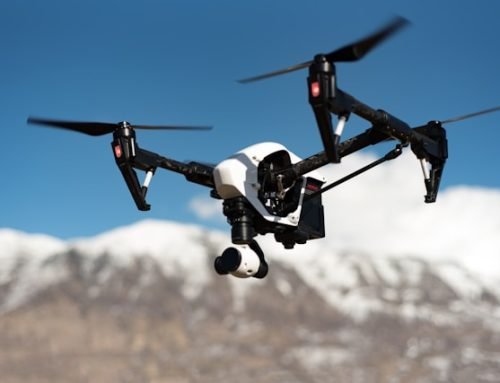The Staying Power of the B-52 Stratofortress
The Staying Power of the B-52 Stratofortress

Why Flying Bombers Haven’t Seen
Technological Upgrades in Recent Years
In the realm of military aviation, the image of a B-52 Stratofortress soaring across the sky evokes a sense of enduring strength and capability. First introduced in the 1950s during the Cold War era, the B-52 remains a cornerstone of the United States Air Force’s bomber fleet, remarkably still in active service decades after its inception. Despite advances in aerospace technology and the introduction of stealth bombers like the B-2 Spirit and B-21 Raider, the B-52’s longevity raises the question: why haven’t flying bombers seen significant technological upgrades in recent years? This article explores the historical context, technological aspects, and strategic relevance of the B-52 Stratofortress, comparing it to more modern counterparts while examining the factors that have contributed to its sustained operational relevance.
Historical Context and Evolution of Bomber Technology
The development of bomber aircraft has been closely intertwined with military strategies and technological advancements throughout history. During World War II, bombers such as the B-17 Flying Fortress and B-29 Superfortress played pivotal roles in strategic bombing campaigns. Post-war, the Cold War era saw rapid advancements in aviation technology, leading to the emergence of jet-powered bombers like the B-52.
- The B-52 Stratofortress: Introduced in 1955, the B-52 was designed to deliver nuclear weapons deep into enemy territory. With a range of over 8,800 miles and capable of carrying up to 70,000 pounds of ordnance, the B-52 quickly became synonymous with strategic deterrence and global reach. Its distinctive design, featuring swept wings and eight turbojet engines, set it apart as a symbol of American military prowess.
- Technological Milestones: Throughout the Cold War and beyond, bombers saw advancements in avionics, radar systems, and weapons integration. The introduction of precision-guided munitions (PGMs) and standoff weapons enhanced the B-52’s capabilities, enabling it to adapt to evolving combat scenarios while maintaining its primary role as a strategic bomber.
Comparing the B-52 to Modern Bombers
While the B-52’s capabilities have been enhanced over the years through avionics upgrades and weapon system modernization, its basic airframe and propulsion technology have largely remained unchanged. This stands in stark contrast to more modern bombers like the B-2 Spirit and B-21 Raider, which incorporate cutting-edge stealth technology and advanced composite materials for reduced radar cross-section and enhanced survivability.
- Stealth Technology: The B-2 Spirit, introduced in the 1990s, represents a leap forward in stealth technology. Its flying wing design and radar-absorbing materials allow it to evade enemy detection and penetrate heavily defended airspace with precision-guided weapons.
- Advanced Avionics and Connectivity: Modern bombers benefit from advanced avionics suites that provide enhanced situational awareness, integrated communication systems, and data-link capabilities for real-time battlefield coordination. These systems enable commanders to execute complex missions with greater efficiency and effectiveness.
- Long-Range Strike Capabilities: Both the B-2 and the upcoming B-21 Raider are designed for long-range strike missions, leveraging aerial refueling capabilities and state-of-the-art engines to extend operational reach and endurance.
Factors Contributing to the B-52’s Continued Relevance
Despite its age, the B-52 remains a versatile and cost-effective platform for a variety of missions, including strategic bombing, close air support, and maritime patrol. Several factors contribute to its sustained operational relevance:
- Adaptability and Upgradability: The B-52 airframe has proven highly adaptable to technological upgrades, allowing it to integrate new avionics, sensors, and weapons systems over time. This flexibility extends its service life and enhances mission capability without the need for a complete redesign.
- Cost-Effectiveness: Compared to newer bombers, the B-52 offers a lower operational cost per flight hour, making it an attractive option for conducting routine patrols, training exercises, and support missions in regions where advanced stealth capabilities are not essential.
- Strategic Deterrence: As a visible symbol of U.S. strategic deterrence, the B-52’s continuous presence reinforces national security commitments and serves as a potent deterrent against potential adversaries. Its ability to carry a diverse payload, including conventional and nuclear weapons, underscores its role in global stability and crisis response.
Future Prospects and Challenges
Looking ahead, the future of bomber technology will likely continue to evolve in response to emerging threats and operational requirements. The introduction of the B-21 Raider, expected to enter service in the coming years, promises to further enhance the U.S. Air Force’s long-range strike capabilities with advanced stealth and networking capabilities. However, the B-52’s role in the strategic arsenal is expected to endure for the foreseeable future, complementing next-generation platforms and contributing to a balanced force structure.
Conclusion
In conclusion, the B-52 Stratofortress exemplifies the enduring legacy of bomber aircraft in military aviation history. Its longevity and operational versatility underscore the importance of adaptability, reliability, and strategic relevance in defense planning. While technological advancements have introduced more advanced bombers with stealth capabilities and enhanced avionics, the B-52’s continued service demonstrates the value of a balanced fleet capable of meeting diverse mission requirements. As the aerospace industry continues to innovate, the B-52 remains a testament to the timeless principles of endurance and effectiveness in military operations, ensuring its place in history as a legendary icon of American air power.
Related Posts
Hello! We are a group of skilled developers and programmers.
Hello! We are a group of skilled developers and programmers.
We have experience in working with different platforms, systems, and devices to create products that are compatible and accessible.


